lncRNA: Transcription Splicing Localization and Function
- Did Cloud Seeding Unleash a Deluge in Dubai?
- Scientists Identify Gut Bacteria and Metabolites that Lower Diabetes Risk
- OpenAI’s Model Matches Doctors in Assessing Eye Conditions
- UK: A Smoke-Free Generation by Banning Sales to Those Born After 2009
- Deadly Mutation: A New Monkeypox Variant Emerges in the DRC
- EPA Announces First-Ever Regulation for “Forever Chemicals” in Drinking Water
lncRNA: Transcription Splicing Localization and Function
- Red Yeast Rice Scare Grips Japan: Over 114 Hospitalized and 5 Deaths
- Long COVID Brain Fog: Blood-Brain Barrier Damage and Persistent Inflammation
- FDA has mandated a top-level black box warning for all marketed CAR-T therapies
- Can people with high blood pressure eat peanuts?
- What is the difference between dopamine and dobutamine?
- What is the difference between Atorvastatin and Rosuvastatin?
- How long can the patient live after heart stent surgery?
lncRNA: Transcription Splicing Localization and Function.
Nature Review Molecular Cell Biology published lncRNA review papers detailing the transcription, splicing, localization and function of lncRNA.
The human genome contains more than 3 billion base pairs, about 75% of which are transcribed.
However, less than 2% of the sequences encode proteins and more than 98% of the regions are non-coding regions. Long non-coding RNA (lncRNA)…
The human genome contains more than 3 billion base pairs, about 75% of which are transcribed. However, less than 2% of the sequences encode proteins and more than 98% of the regions are non-coding regions.
Long non-coding RNA (long non-coding RNA, lncRNA) is a class of molecules with a length of more than 200 nucleotides, widespread, but not capable of protein coding. More and more studies have shown that they are involved in the regulation of gene expression. Plays an important function.
Chinese Chen Lingling’s research group has been engaged in long non-coding RNA biology research for a long time, and published a series of important research results of long non-coding RNA.
Recently, Chen Lingling, Center for Excellence in Molecular Cell Science China, Chinese Academy of Sciences, and others published an online review paper entitled: Gene regulation by long non-coding RNAs and its biological functions in Nature Review Molecular Cell Biology.
This article systematically discussed the gene regulation functions and mechanisms of the generation, subcellular location, transcription level and post-transcriptional level of long non-coding RNA, and discussed the function and potential application of long non-coding RNA in the development of disease.

This review provides a detailed summary of lncRNA transcription, processing and splicing, localization mechanism, and lncRNA functions, regulatory mechanisms and potential applications of different subcellular locations.

The biogenesis and cell fate of lncRNA
Although most lncRNAs are transcribed by RNA polymerase II (Pol II) and have polyadenylic acid tails and m7G cap structures, their processing and splicing efficiency is low, and they exhibit obvious nuclear localization.
The lncRNA located in the nucleus can interact with DNA, RNA, protein and other molecules to regulate the structure and function of chromosomes; or regulate gene transcription in cis or trans, and affect mRNA splicing, stability and translation.
Some lncRNAs are located in non-membrane substructures in the nucleus, such as nuclear speckle, paraspeckle, nuclear stress body, etc., and are involved in regulating their assembly and function.
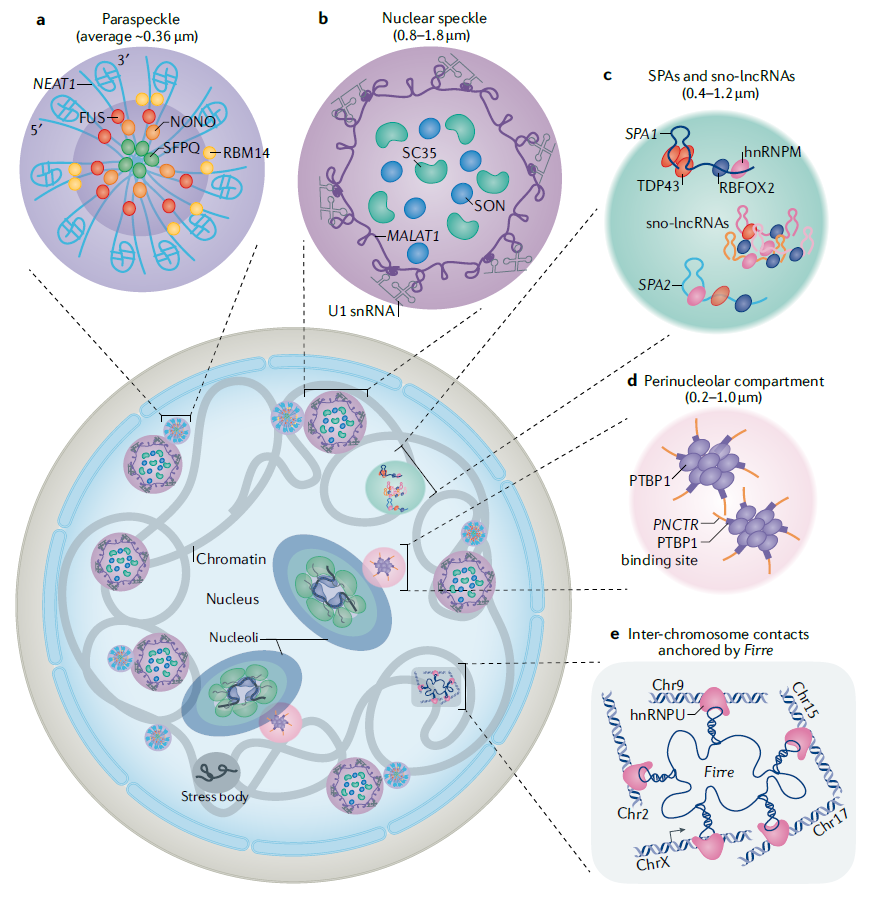
The role of lncRNA in the nucleus
The completely spliced lncRNA is transported into the cytoplasm or other organelles through a mechanism similar to that of mRNA.
Once located in the cytoplasm, lncRNA trans-regulates gene expression at the post-transcriptional level, such as regulating mRNA translation and degradation, or participating in the regulation of intracellular signaling pathways.
The lncRNA located in special organelles can participate in the function and metabolic regulation of organelles, such as the oxidation reaction and homeostasis of mitochondria.
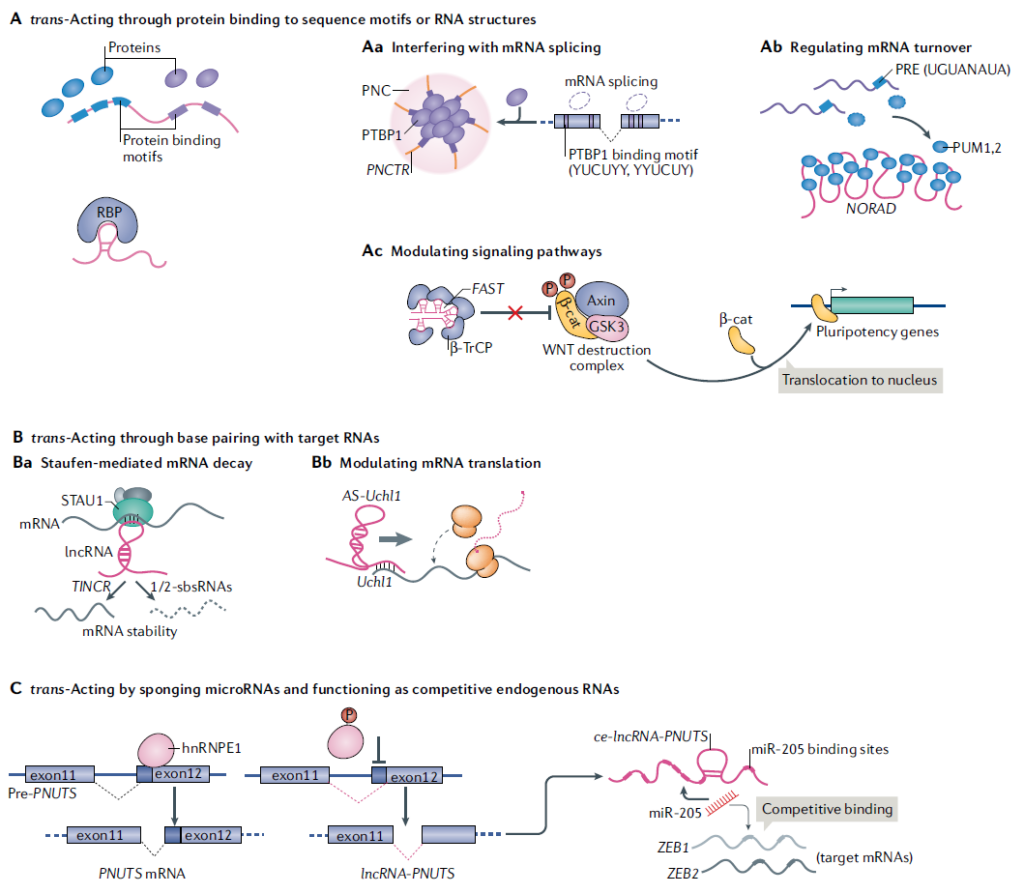
lncRNA trans-regulates gene expression at the post-transcriptional level
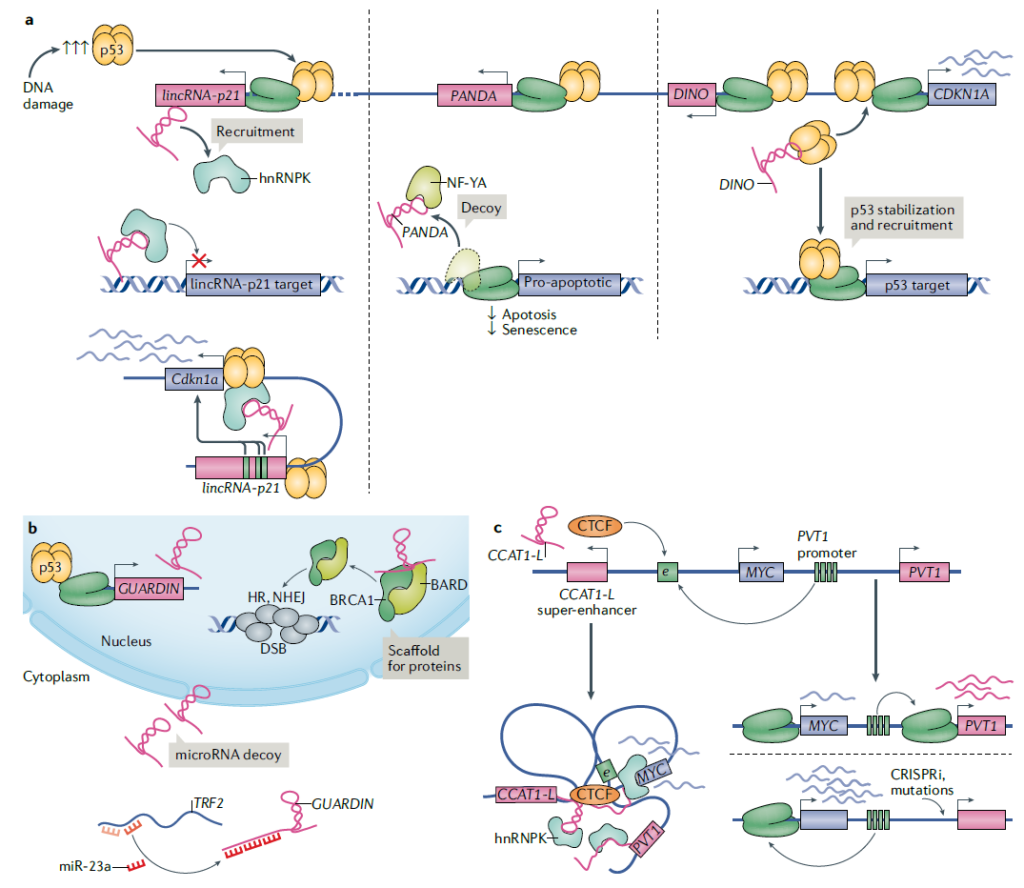
LncRNA associated with cancer
Finally, the article details the important regulatory effects and mechanisms of lncRNA in a variety of pathological conditions, including neurological differentiation, neurological diseases, hematopoietic, immune response, cancer and other related diseases, and analyzes and analyzes lncRNA as a therapeutic target. Outlook.
Professor Maite Huarte and researcher Chen Lingling from the University of Navarra in Spain are the co-corresponding authors of this article.
Luisa Statello, a postdoctoral fellow in the Maite Huarte group, and Guo Chunjie, a doctoral student in the Chen Lingling group, are the co-first authors of this article.
The research group of Lingling Chen, Center for Excellence in Molecular Cell Science (Institute of Biochemistry and Cell Biology), Chinese Academy of Sciences, has been engaged in long non-coding RNA biology research for a long time, and published a series of important research results on long non-coding RNA, including 4 Cell papers: Two lncRNA papers and two circRNA papers, this article focuses on two lncRNA papers.
On May 4, 2017, Lingling Chen’s team published a research paper titled: SLERT Regulates DDX21 Rings Associated with Pol I Transcription in Cell Magazine.
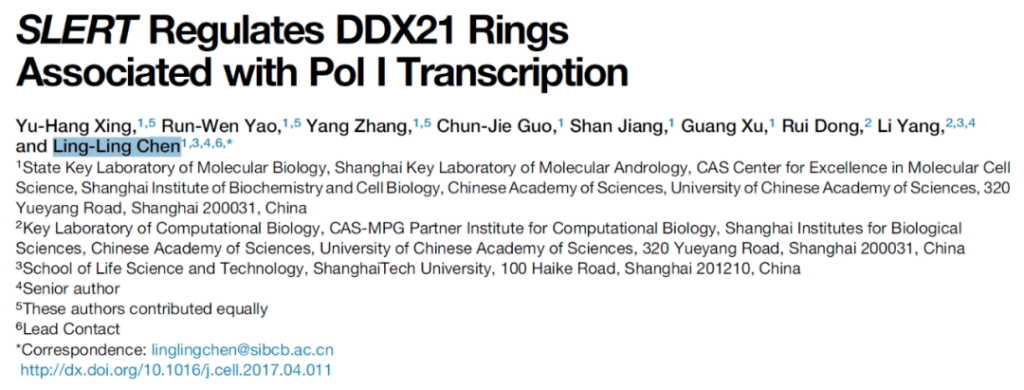
This result reveals the important function and mechanism of SLERT of long non-coding RNA in the cell nucleus during the transcription of RNA polymerase I.
This is the first time that long non-coding RNA that can regulate RNA polymerase transcription has been discovered in human cells.
In addition, the results also explain the unique new functions of this RNA and expand the mechanism of action of long non-coding RNAs.
On April 6, 2020, Lingling Chen’s team published a research paper titled: Distinct processing of lncRNAs contributes to non-conserved functions in stem cells in Cell magazine.

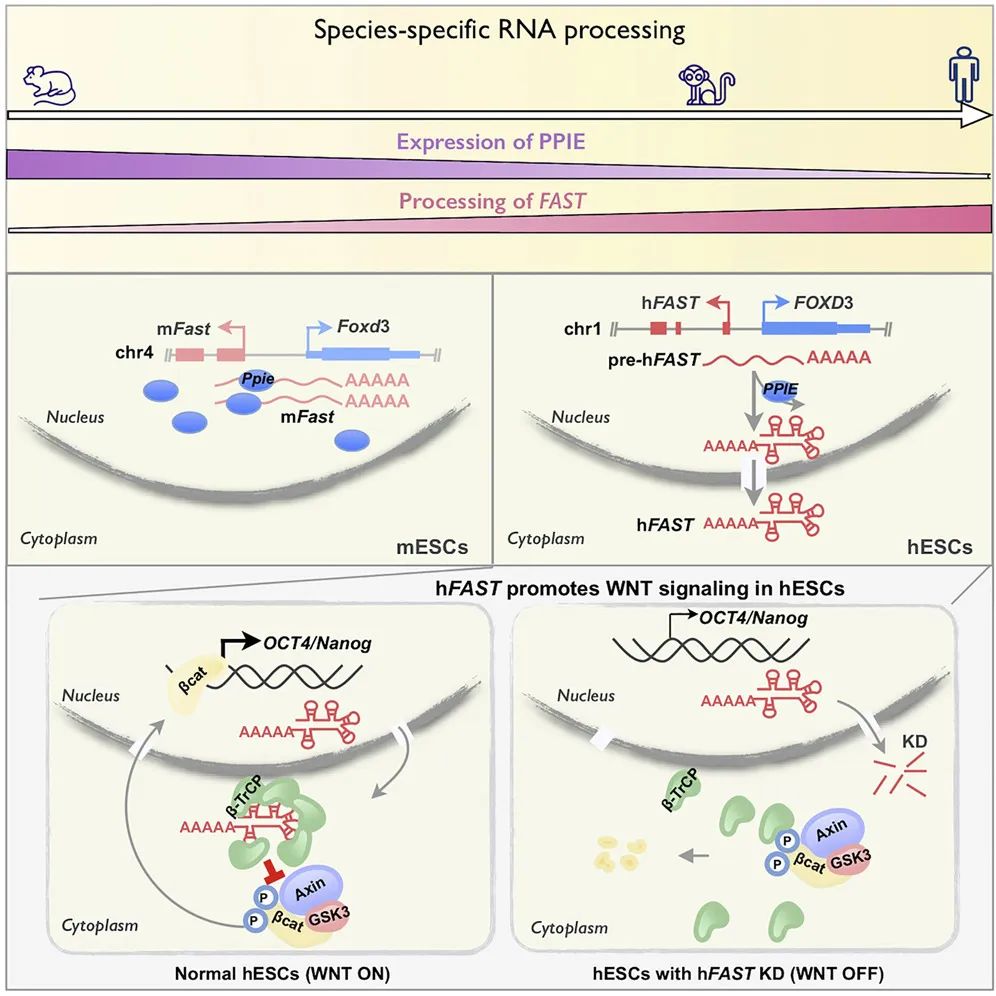
This study found for the first time that the specific processing of long non-coding RNA in stem cells from different species is an important mechanism for its adaptive functional changes, providing a new idea for in-depth understanding of the function and evolution of long non-coding RNA.
This latest study uses high-throughput sequencing analysis to separate human and murine embryonic stem cells from nuclear and cytoplasmic RNA, and for the first time found significant differences in the processing and subcellular location of long non-coding RNA in human and murine embryonic stem cells.
The long non-coding RNA with conserved sequence and genomic location is more located in the cytoplasm in human embryonic stem cells, and more in the nucleus in mouse embryonic stem cells.
It is worth mentioning that multiple long non-coding RNAs located in the cytoplasm of human embryonic stem cells are involved in maintaining the self-renewal of human stem cells, while the corresponding long non-coding RNAs with conservative genomic positions tend to be located in the nucleus of mouse embryonic stem cells. It has no obvious effect on stem cell maintenance.
The different subcellular locations of these long non-coding RNAs in stem cells from different species suggest that they may have different processing methods and biological functions in human and mouse embryonic stem cells.
The study analyzed in detail the molecular mechanism of one of the new types of long non-coding RNA-FAST in maintaining the self-renewal of human embryonic stem cells. FAST is a long non-coding RNA with conserved genomic position and is specifically and highly expressed in embryonic stem cells.
In human and monkey embryonic stem cells, hFAST is located in the cytoplasm to maintain the self-renewal of embryonic stem cells.
Mechanism studies have shown that in human embryonic stem cells, cytoplasmic hFAST binds to β-TrCP protein, which prevents β-TrCP from degrading the key protein β-catenin in the important signaling pathway WNT, thereby maintaining the continuous activation of WNT signaling pathway and the self-renewal of stem cells.
In mouse embryonic stem cells, mFast is located in the nucleus and cannot bind β-TrCP, nor does it affect the WNT signaling pathway and stem cell pluripotency.
In order to further explore the molecular mechanism of the differences in the processing and positioning of long non-coding RNAs between different species, the researchers combined with bioinformatics analysis and prediction and experimental verification to screen the key factor PPIE that regulates their different positions.
In murine embryonic stem cells, PPIE protein is highly expressed and inhibits the splicing and processing of long non-coding RNAs (including mFast) so that it remains in the nucleus; in human embryonic stem cells, PPIE protein is lowly expressed, resulting in more long non-coding RNAs It is spliced and processed and transported to the cytoplasm to function; while in monkey embryonic stem cells, the expression of PPIE protein, FAST and other long non-coding RNAs in the cell are more likely to be human embryonic stem cells.
This work found for the first time that non-conservative RNA processing and localization play an important role in the functioning of long non-coding RNAs, suggesting that the variety of long non-coding RNAs may be an important mechanism for species-specific regulation and adaptation.
lncRNA: Transcription Splicing Localization and Function
(source:chinanetnet, reference only)
Disclaimer of medicaltrend.org



